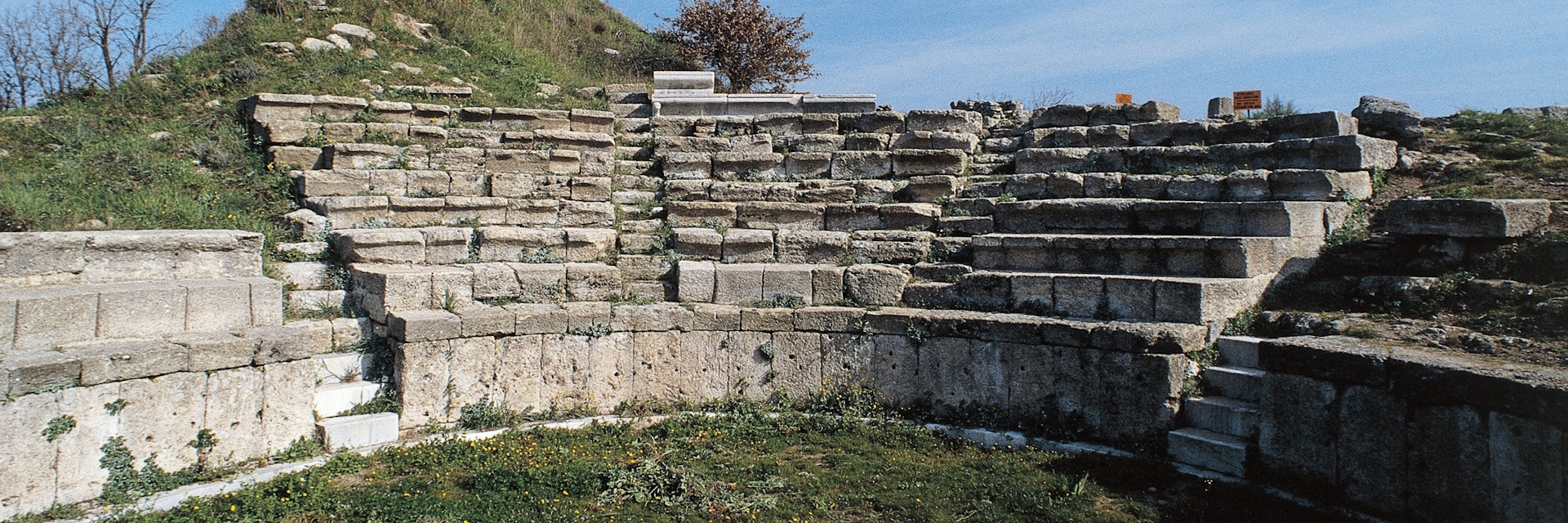If you come to Troy expecting a rebuilt ancient city along the lines of Ephesus, you'll be disappointed. The site resembles an overgrown archaeological dig and it's very difficult to imagine what the ancient city would have looked like.
As you approach the ruins, take the stone steps up on the right. These bring you out on top of what was the outer wall of Troy VIII/IX, from where you can gaze on the fortifications of the east wall gate and tower of Troy VI.
Go back down the steps and follow the boardwalk to the right, between thick stone walls and up a knoll, from where you can look at some original (as well as some reconstructed) red-brick walls of Troy II/III. The curved protective roof above them is the same shape and height as the Hisarlık mound before excavations began in 1874.
Continue following the path, past the northeast bastion of the heavily fortified city of Troy VI, the site of a Graeco-Roman Troy IX Temple of Athena and further walls of Troy II/III. You can make out the stone foundations of a megaron (building with porch) from the same era.
Next, beyond traces of the wall of Early/Middle Troy (Troy I south gate) are more remains of megarons of Troy II, which were inhabited by a literal 'upper class' while the poor huddled on the plains.
The path then sweeps past the original trial trench established by German archaeologist Heinrich Schliemann; this cuts straight through all the layers of the city. Signs point out the nine city strata in the trench's 15m-high sides.
Just round the corner is a stretch of wall from what is believed to have been the two-storey-high Troy VI Palace Complex, followed by traces from Troy VIII/IX of a sanctuary to unknown deities. Later, a new sanctuary was built on the same site, apparently honouring the deities of Samothrace. Eventually, the path passes in front of the Roman Odeon, where concerts were held and, to the right, the Bouleuterion (Council Chamber), bringing you back to where you started.

